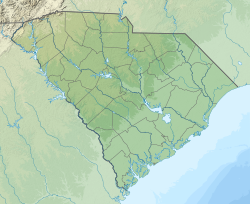Sharks reported from the Chandler Bridge Formation Genus Species Presence Material Notes Images Alopias A. cf. A. vulpinus Teeth (BCGM 9046–9048, SC 2009.18.3). [ 11] A thresher shark . Bythaelurus B. sp.A fragmentary tooth (BCGM 9074). [ 11] A catshark . Carcharias C. cuspidatus Teeth (BCGM 9051 and 9052). [ 11] A sand shark . C. sp.A posterior tooth (BCGM 9053) and a lateral tooth from a very young individual (BCGM 9054). [ 11] A sand shark . Carcharhinus C. gibbesi BCGM 9056–9062, SC 2009.18.6. [ 11] The most abundant non-batoid elasmobranch in the Chandler Bridge sample. [ 11] C. leucas Upper sandy unit. [ 4] The bull shark . Carcharocles C. angustidens Upper sandy unit. [ 4] Teeth. [ 23] Reassigned to the genus Otodus . C. sp.Teeth (BCGM 9055, SC 2009.18.5). [ 11] Reassigned to the genus Otodus . Cetorhinus ?C. parvus Scales (BCGM 9049 and 9050, SC 2009.18.4). [ 11] A basking shark . Galeocerdo G. 'casei' Upper sandy unit. [ 4] Galeorhinus G. sp.Teeth (BCGM 9080–9083, SC 2009.18.13). [ 11] A houndshark . Hemipristis H. serra Teeth (BCGM 9071–9073, SC 2009.18.10). [ 11] A weasel shark . Nebrius N. cf. N. serra A tooth (SC 2009.18.1). [ 11] A nurse shark . Otodus O. angustidens Upper sandy unit. [ 4] Teeth. [ 23] Assemblages dominated by teeth of juveniles and neonates, with few adults present, suggesting a nursery area for the species. [ 23] O. sp.Teeth (BCGM 9055, SC 2009.18.5). [ 11] A megatooth shark . Physogaleus P. aduncus Teeth (BCGM 9063–9066, SC 2009.18.7). [ 11] A ground shark . P. contortus Upper sandy unit. [ 4] A ground shark . P. sp.Broken and/or abraded teeth (BCGM 9067 and 9068, SC 2009.18.8). [ 11] A ground shark . Rhincodon R. cf. R. typus Teeth (BCGM 9044 and 9045, SC 2009.18.2). [ 11] The oldest fossil record of the whale shark . Rhizoprionodon R. sp.Small, imperfectly preserved teeth (BCGM 9069 and 9070, SC 2009.18.9). [ 11] A sharpnose shark . Sphyrna S. cf. S. media BCGM 9075–9077, SC 2009.18.11. [ 11] A hammerhead shark . S. zygaena BCGM 9078 and 9079, SC 2009.18.12. [ 11] The more common of the two hammerhead shark species found in the formation. [ 11] Squatina S. cf. S. angeloides BCGM 9042 and 9043. [ 11] An angelshark . 
























